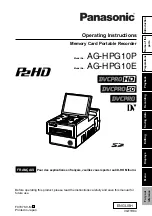
Parameter
Default
Function
TTLS Inner Method
Auto-EAP
Authentication method used within the secure tunnel created by EAP-TTLS.
Options are:
AUTO-EAP (Any available EAP method), MSCHAPV2, MSCHAP, PAP,
CHAP, EAP-MSCHAPV2
PMK Caching
Standard
Type of Pairwise Master Key (PMK) caching to use when WPA2 is in use.
PMK caching is designed to speed up roaming between APs by allowing the
client and the AP to cache the results of 802.1X authentications, eliminating
the need to communicate with the ACS server. Standard PMK is used when
there are no controllers. The reauthentication information is cached on the
original AP. The client and the AP use the cached information to perform the
four-way handshake to exchange keys. Opportunistic PMK (OPMK) is used
when there are controllers. The reauthentication information cached on the
controllers. The client and the controller behind the AP use the cached
information to perform the four-way handshake to exchange keys.
If the selected PMK caching method is not supported by the network
infrastructure, every roam requires full 802.11X authentication, including
interaction with the ACS server.
If the active profile is using WPA2 CCKM, the global PMK Caching setting
is ignored and the client attempts to use CCKM.
Options are: Standard, OPMK
Note:
This change does not take effect until after a Suspend/Resume
cycle.
WAPI
Off
Default is Off and dimmed (cannot be changed).
TX Diversity
On
How to handle antenna diversity when transmitting packets to the Access
Point.
RX Diversity
On Start on
Main
How to handle antenna diversity when receiving packets from the Access
Point.
Options are: On-start on Main, and Main only
Frag Thresh
2346
If the packet size (in bytes) exceeds the specified number of bytes set in the
fragment threshold, the packet is fragmented (sent as several pieces instead
of as one block). Use a low setting in areas where communication is poor or
where there is a great deal of wireless interference.
This parameter cannot be changed.
RTS Thresh
2347
If the packet size exceeds the specified number of bytes set in the Request
to Send (RTS) threshold, an RTS is sent before sending the packet. A low
RTS threshold setting can be useful in areas where many client devices are
associating with the Access Point.
This parameter cannot be changed.
LED
Off
The LED on the wireless card is not visible to the user when the wireless
card is installed in a sealed mobile device.
Options are: On, Off.
This parameter cannot be changed.
8-17
Summary of Contents for MX7 Tecton
Page 14: ...xiv ...
Page 24: ...1 10 ...
Page 38: ...3 4 ...
Page 166: ...Hat Encoding Hat Encoded Characters Hex 00 through AD 4 128 ...
Page 167: ...Hat Encoded Characters Hex AE through FF 4 129 ...
Page 176: ...4 138 ...
Page 177: ...4 139 ...
Page 202: ...Enter user name password and domain to be used when logging into network resources 4 164 ...
Page 209: ...4 171 ...
Page 240: ...5 22 ...
Page 276: ...7 30 ...
Page 320: ...8 44 ...
Page 325: ...Click the Request a certificate link Click on the advanced certificate request link 8 49 ...
Page 326: ...Click on the Create and submit a request to this CA link 8 50 ...
Page 334: ...8 58 ...
Page 358: ...9 24 ...
Page 362: ...10 4 ...
Page 365: ...11 3 ...
















































